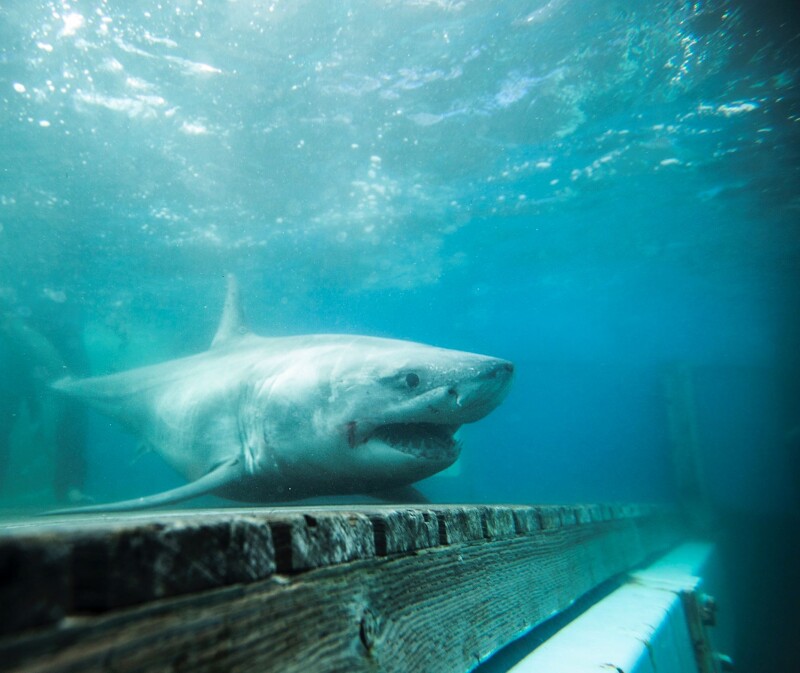In 1899, American artist Winslow Homer painted “Gulf Stream” out of his imagination, depicting a sailor drifting on a wrecked boat surrounded by sharks—great whites. The association of great whites with the waters of the Gulf Stream obviously goes back a long way. Still, until the non-profit research organization Ocearch started tagging white sharks in the northwest Atlantic in 2012, little was known about their habits and migration patterns in the region.
Ocearch has tagged hundreds of sharks worldwide, and the organization’s Global Shark Tracker app now allows anyone to follow the migrations of dozens of white sharks off the U.S. and Canada's East Coast. “The sharks can transit from the western Gulf of Mexico all the way to Newfoundland” says John Tyminski, senior data scientist at Ocearch. “But we’re seeing that seals are often the primary driver of where they stay and feed. That’s their main food supply. So that’s why we see them around Cape Cod and the Atlantic Canada in the summer and early fall.”
Ocearch uses three types of tags: the SPOT tag that the organization’s team attaches to the dorsal fin, pop-up satellite archival tags, and acoustic tags. Working from the R/V Ocearch—a 126-foot former king crabber that the organization has modified for shark handling and tagging— researchers capture, sample, and tag sharks. “Our master fisherman, Captain Brett McBride, and his team hook the sharks, and then we bring them to a submerged platform on the side of the mother ship,” says Tyminski. “The hydraulic platform raises the shark up above the water surface, and then our team goes to work like a NASCAR pit crew, gathering as many samples as possible and attaching the tag. In 15 minutes, the shark is back in the water. The SPOT tag will transmit to a satellite whenever a shark comes to the surface, providing Ocearch with the animal’s location. The battery lasts around five years.”
According to Tyminski, the information Ocearch collects from its tags has provided a few surprises. “We found many young-of-the-year whites off the New York Bight and confirmed it as a critical nursery area. Another thing we’re seeing is how far out into the Atlantic the sharks can go when they move off the shelf. We had one, a mature female, that went all the way to the other side of the Mid-Atlantic Ridge.”
Ocearch shares its research widely. “We just got a request from the Highly Migratory Species Division of NOAA,” says Tyminski. “We provided them with a significant amount of white shark data for their assessment. The sharks are protected in the U.S. and listed as endangered in Canada.”
While some fishermen may appreciate the sharks’ appetite for seals and their role in maintaining ecological balance, others often lose hooked fish to these apex predators. “When we’re in a new area, we often invite local fishermen aboard to provide local knowledge. They are the experts; no scientist can hope to spend as much time on the water as they do.”
As in Homer’s painting over a hundred years ago, the general knowledge of the white sharks’ range may still exist, but Ocearch is now collecting data that verifies, expands on, and connects fragments of local understanding.







